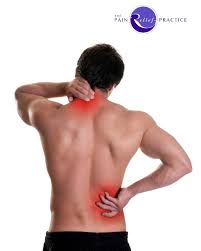It may be crippling to live with pain, affecting every part of our lives. Finding relief is critical for our general well-being, whether the pain is short-term from an injury or persistent from a medical condition. Fortunately, there are many methods and resources available to assist successfully manage and reduce pain. We’ll go over a number of pain relief necessities in this extensive guide that can really improve your life.
Comprehending Pain:
Understanding what pain is and how it affects us is essential before attempting any pain management techniques. Pain is a complicated feeling that our bodies use to alert us to possible danger or injury. It may be chronic, continuing for a long time, or acute, lasting only a short while. Chronic pain need long-term care techniques because it is frequently caused by diseases like arthritis, fibromyalgia, or nerve damage.
Essentials for Pain Relief:
Warm and Chilled Treatment:
Heat therapy increases blood flow to the affected area, which helps relieve joint pain and muscle stiffness. Examples of this therapy include hot packs and warm baths.
When used in conjunction with cold therapy—such as ice packs or cold compresses—the area becomes numb and less inflammatory, relieving acute injuries or swelling.
Topical Painkillers:
For localized pain relief, creams, gels, or patches containing menthol, capsaicin, or lidocaine can be administered directly to the skin.
These topical remedies work particularly well for neuropathic pain, arthritis, and muscular aches.
TENS Devices:
By delivering tiny electrical impulses through electrodes applied to the skin, transcutaneous electrical nerve stimulation (TENS) devices prevent pain signals from entering the brain.
Non-invasive TENS therapy is useful for managing a variety of pain conditions, such as osteoarthritis, sciatica, and back pain, at home.
acupuncture
Acupuncture, which has its roots in ancient Chinese medicine, is a technique that stimulates nerve endings and encourages the body’s natural ability to relieve pain by inserting tiny needles into particular body spots.
According to studies, acupuncture may help with long-term pain issues like osteoarthritis, migraines, and lower back discomfort.
Mind-Body Methodologies:
Deep breathing, gradual muscle relaxation, and meditation are among techniques that may lessen stress and tension, which can make pain worse.
Programs for mindfulness-based stress reduction (MBSR) have been demonstrated to enhance people with chronic pain disorders’ perception of pain and quality of life.
Physical Medicine:
Physical therapists create customized exercise regimens to address underlying musculoskeletal problems causing pain while also enhancing mobility, strength, and flexibility.
Physical therapy sessions frequently involve techniques like manual treatment, therapeutic exercises, and modalities like ultrasound or electrical stimulation.
Apps for Pain Management:
Applications for smartphones provide easy-to-use tools for monitoring pain levels, scheduling appointments for therapy or medicine, and accessing guided exercise or relaxation methods.
With the help of these apps, people may actively manage their pain and track their progress over time.
CBD-Products:
The cannabis plant yields cannabidiol (CBD), which has analgesic and anti-inflammatory qualities without the euphoric effects of THC.
CBD-containing goods, such as topical creams, oils, and capsules, are becoming more and more well-liked for treating pain, anxiety, and sleep issues.
Ergonomic Tools:
An adjustable desk, lumbar cushions, and supportive pillows are a few examples of ergonomic items and equipment that can help with posture and lessen joint and muscle strain.
In order to avoid repetitive strain injuries and to ensure comfort while performing regular tasks, proper ergonomics are crucial.
Support for Nutrition:
Pain can be lessened and inflammation can be decreased with a well-balanced diet high in anti-inflammatory foods such fruits, vegetables, whole grains, and omega-3 fatty acids.
Supplements like omega-3 fish oil, turmeric, and ginger may also offer extra help for joint health and pain relief.
In summary:
One’s quality of life need not be sacrificed in order to live with pain. You may effectively control your symptoms and enhance your general wellness by implementing a daily routine that includes a combination of vital pain management ingredients. Finding the ideal combination of tools and approaches suited to your needs, whether it be through heat therapy, acupuncture, mindfulness exercises, or dietary support, can significantly impact your path to pain relief and maximum health. On your journey to wellness, don’t forget to seek the advice and assistance of medical specialists.

